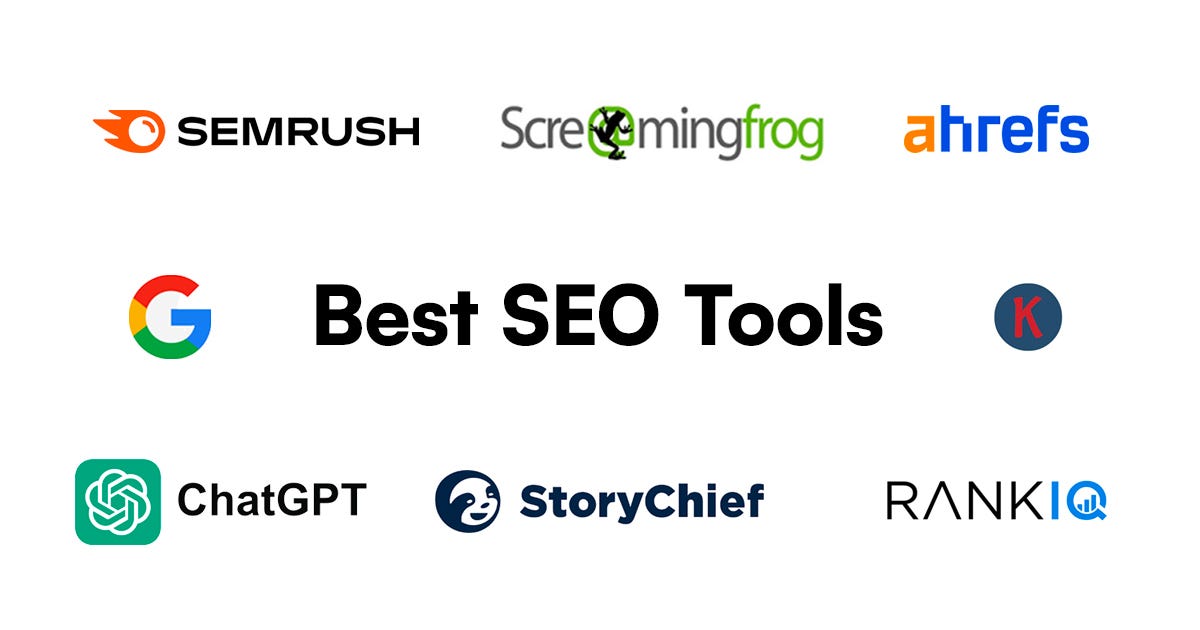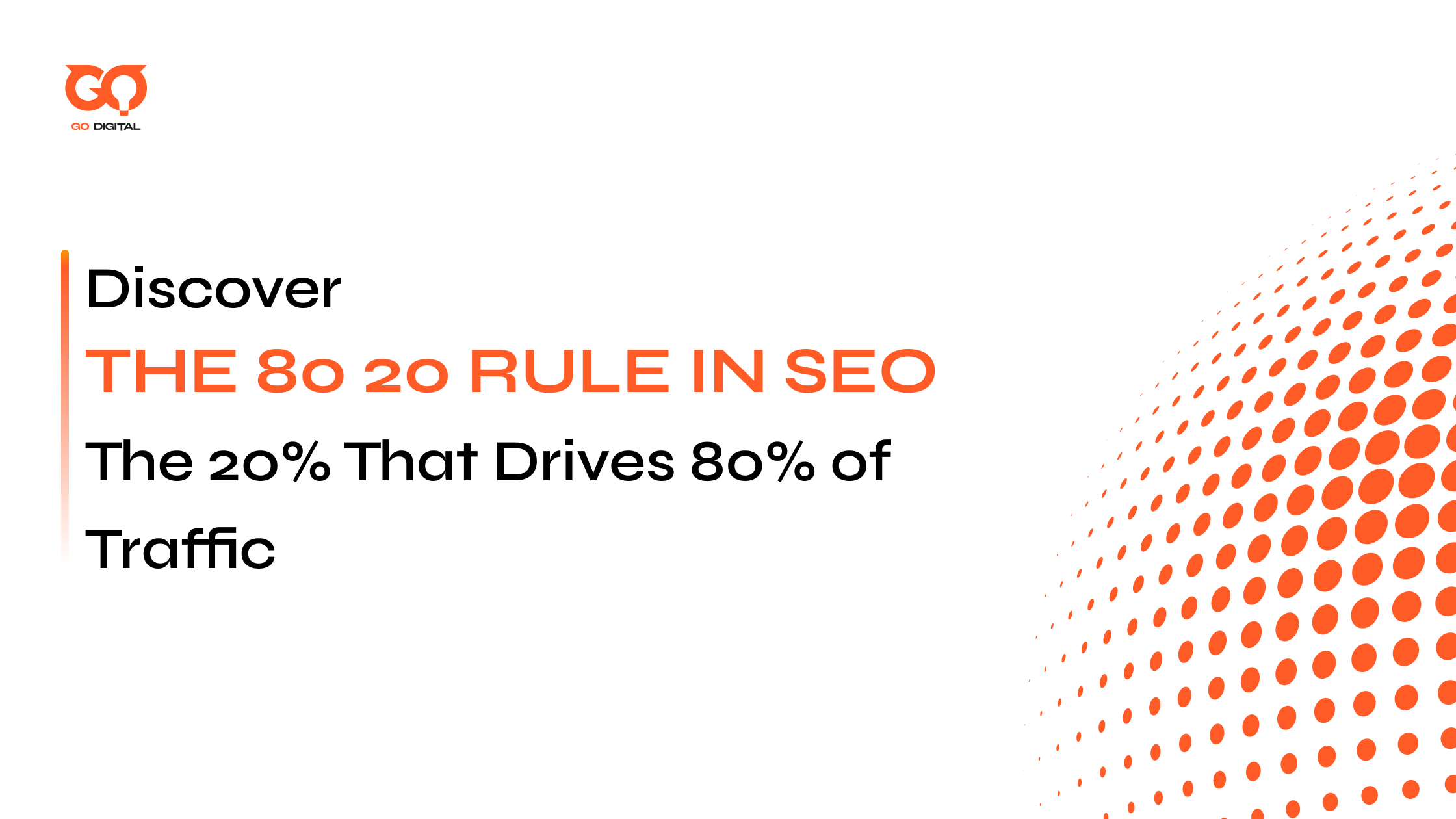In today’s digital world, appearing on the first page of search results is essential for business growth. With over 90% of online journeys starting on search engines, optimizing your website is no longer optional—it’s critical.
An SEO audit uncovers what’s working and what needs improvement, paving the way for a stronger online presence. Let GODI help you unlock your website’s full potential with a thorough SEO audit guide!
Key Takeaways
|
Why is SEO Audit Important?
An SEO audit is an essential process for making sure that your website is optimized for search engines and provides a seamless user experience. It’s like a health checkup for a website, identifying areas that need improvement to help achieve higher search rankings, increased traffic, and better performance.
But to fully comprehend why SEO audit is important, it’s best to look at the technical benefits of this tactic.
Improve Search Engine Rankings
Search engine optimization (SEO) is key to making your website visible to your target audience. Without an SEO audit, it’s challenging to know what’s working and what’s not in rankings. By conducting an audit, you can uncover areas that need improvement, such as keyword optimization, meta tags, and content, ultimately boosting search engine rankings.

An SEO audit helps improve rankings
Identify Technical Issues Early
Technical SEO issues can prevent search engines from properly crawling and indexing a website. These issues may include broken links, crawl errors, and improper redirects. Regular SEO audits help identify and resolve the technical challenges before they negatively impact your site’s visibility.
Enhance User Experience
Google values user experience. An SEO audit helps identify aspects of the site that may be hindering a positive user experience, such as slow loading times, poor navigation, or non-responsive design. Enhancing user experience not only improves rankings but also increases user engagement and conversion rates.

Improving user experience helps increase engagement and boost search engine rankings
Maximize Content Performance
Content is king in the world of SEO. But, without an SEO audit, you might miss opportunities to optimize your content. An audit will reveal whether content is optimized for the right keywords, is of high quality, and provides value to the audience. By identifying content gaps and opportunities, you can refine your strategy for better performance.
Boost Site Speed and Mobile Usability
Website speed and mobile responsiveness are critical. SEO audit can help a website load quickly and be fully optimized for mobile devices. Faster, mobile-friendly websites rank higher and keep visitors longer, demonstrating why SEO audit is important for modern web performance.
 Faster page speed helps retain users longer
Faster page speed helps retain users longer
Strengthen Site Security and Trust
Google prioritizes secure websites that provide a trustworthy experience for users. Part of an SEO audit includes checking for HTTPS and other security features. Auditing your site’s security settings can prevent vulnerabilities and improve your website’s reputation, which can ultimately affect rankings.
 Improving website security helps prevent vulnerabilities
Improving website security helps prevent vulnerabilities
Track SEO Progress Over Time
SEO is an ongoing effort. By conducting regular SEO audits, you can track the website’s SEO performance over time, measure improvements, and identify areas that still need attention. It helps stay ahead of competitors and ensures your site remains optimized.
When to Perform an SEO Audit?
Here are the key instances where performing an SEO audit is particularly recommended, further emphasizing the importance of an SEO audit
- Before launching a new website: It helps set up good SEO from the start, avoid common problems, and make your site easier to find when it goes live.
- After a major redesign or migration: An SEO audit, often utilizing SEO audit tools, immediately following such changes is crucial for quickly identifying and resolving issues.
- Following a drop in organic traffic: A decline in organic traffic signals underlying problems. An SEO audit helps diagnose the cause and plan a recovery strategy, demonstrating how SEO audits improve website performance.
- After Google algorithm updates: Google’s algorithm updates can affect rankings. Thus, an SEO audit will assess these impacts and guide the necessary adjustments to maintain or improve.
- On a regular schedule (quarterly or bi-annually): Routine audits, guided by an SEO audit checklist, proactively identify potential issues, adhere to best practices, and continuously improve website performance
 Key moments to perform an effective SEO audit
Key moments to perform an effective SEO audit
How to Run an Effective SEO Audit: 15 Actionable Steps
Performing an SEO audit requires attention to detail and the right tools. Understanding why SEO audit is important is crucial before diving in. Here are 15 actionable steps to guide you through the important procedure, ultimately showing how SEO audits improve website performance:
1. Choose a Reliable SEO Audit Tool
Use popular and reliable SEO audit tools like Ahrefs, SEMrush, and Google Search Console. Ahrefs and SEMrush give you a full view of the website’s SEO, including backlinks, keywords, and technical issues. Google Search Console shows how a site performs directly on Google. Choosing the right tool helps collect useful data to understand better and improve your website’s performance.
2. Check Your robots.txt and sitemap.xml
The robots.txt file indicates which pages search engine crawlers should and shouldn’t access. The sitemap.xml file acts as a roadmap, guiding them to the important pages on the site. Ensuring the files are correctly configured and up-to-date is a critical element of your SEO audit checklist for proper indexing.
To test your robots.txt file, open an incognito browser and go to https://example.com/robots.txt. If you see the content, you can check the code. Google offers two ways to fix robots.txt errors:
- Report robots.txt in Search Console: For files that are already live on the web.
- Google’s open-source robots.txt library: For developers, it allows you to test right on your computer.
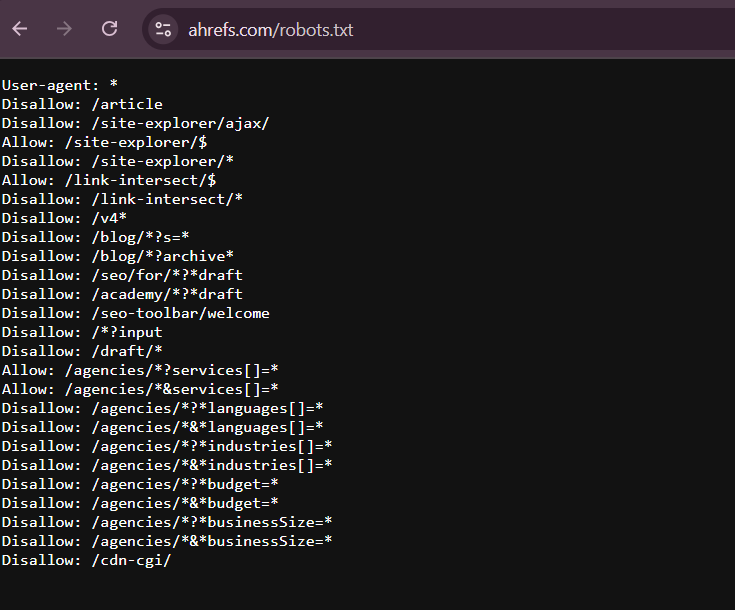
robots.txt and sitemap.xml are correctly configured and kept up to date
To address the issues uncovered during an SEO audit, applying the right SEO techniques is crucial. Learn more about the top techniques for SEO to improve your website’s performance
3. Evaluate Your Site Structure and Navigation
A well-organized website is easier for both users and search engines to understand and navigate. Examine your site’s hierarchy, the logic of URL structure, and how your internal links connect pages. An ideal website should be no more than 3 clicks from the home page to any important subpages.
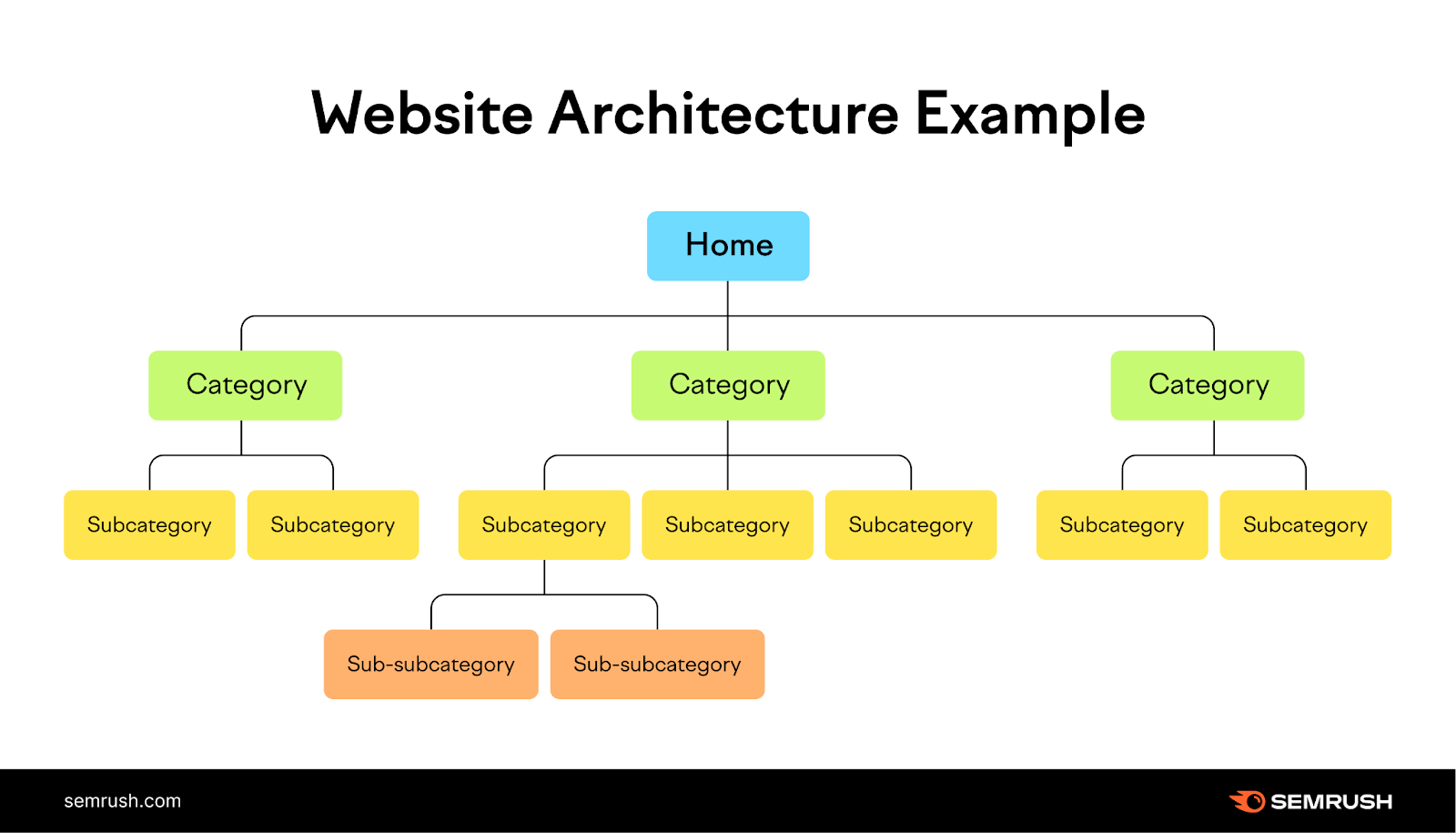
A well-organized website is easier to understand and navigate for both users and search engines (Source: Ahrefs)
4. Find and Fix Broken Links and Redirects
Broken links lead to user frustration and signal neglect to search engines. Additionally, improper redirects can confuse crawlers and diminish link value. So, You can use tools like Screaming Frog, Ahrefs, or Google Search Console to scan your site. These tools help detect 404 errors, redirect chains, and incorrect redirects (302 instead of 301).
Then, update your internal links or reset your redirects properly. It will maintain link strength and help bots crawl more effectively.
 Fix broken links and redirects to improve the user experience
Fix broken links and redirects to improve the user experience
5. Assess Your Website’s Mobile Responsiveness
Mobile traffic is expected to account for more than 72% of global traffic by 2025. Therefore, ensuring that your website displays well on all screen sizes is a priority. Google introduced mobile-first indexing in 2018, clearly showing the trend of prioritizing mobile-friendly content in search results.
However, mobile-first requires comprehensive optimization: from content, images, and URLs to design elements. They will bring a smoother experience and more convenient search purposes.
Google recommends using the Mobile-Friendly Test to evaluate the level of friendliness of your website with mobile devices. In addition, regularly monitor Core Web Vitals and Mobile Usability reports on Search Console to maintain a stable quality of experience.
6. Measure Your Website’s Loading Speed
Slow-loading websites can often result in high bounce rates and a poor user experience, both of which negatively impact SEO. Tools like Google PageSpeed Insights help analyze your site’s speed and identify areas for potential improvement, such as image optimization or leveraging browser caching.
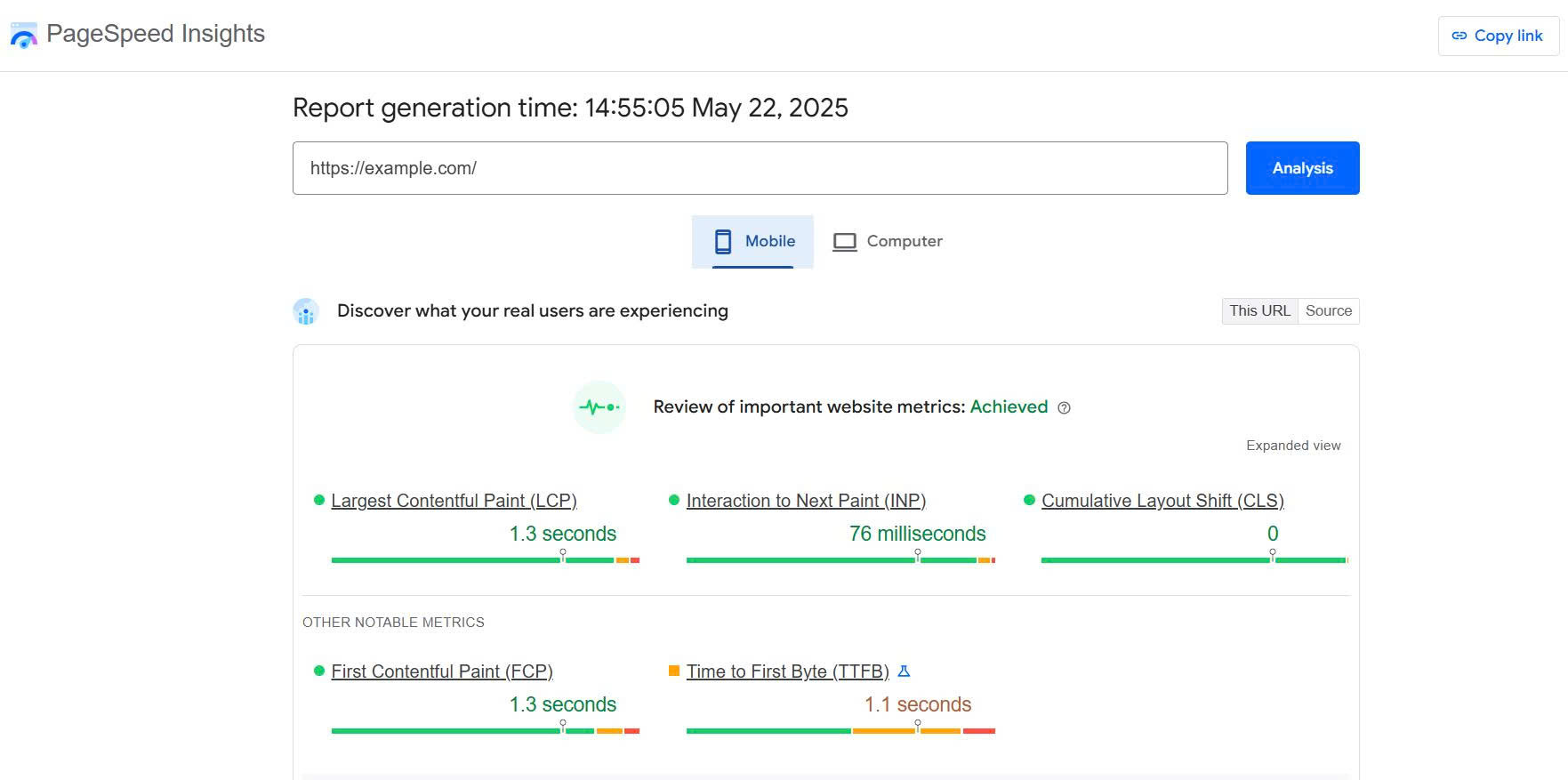 Use Google PageSpeed Insights to measure page loading speed
Use Google PageSpeed Insights to measure page loading speed
7. Analyze Your Meta Titles and Descriptions
Meta titles and descriptions are the text snippets displayed on search engine results pages. They serve as the first point of contact to attract visitors to the site. Crafting clear, compelling, and relevant meta tags that include pertinent keywords can significantly improve your click-through rates from SERPs.
The title should be clear, contain the main keyword, and no more than 60 characters. The description should be attractive, relevant to the page content and be between 150–160 characters.
8. Review Your Heading Structure and Keyword Usage
The structure of your headings, such as H1, H2, and H3 tags, clarifies content. Examine how headings are utilized and where relevant keywords are incorporated. The goal is to optimize for both audience readability and search engine comprehension.
Each page has only one H1 tag, which accurately reflects the main topic. H2 and H3 tags are used to logically organize the content. In addition, naturally integrating primary and secondary keywords into the title will help increase visibility on SERPs.
 Review the headings and distribute keywords
Review the headings and distribute keywords
9. Detect Duplicate or Missing Content
Duplicate content can confuse search engines and weaken ranking potential. Similarly, missing content on key topics represents a missed opportunity. You should use tools like Ahrefs, or Screaming Frog to detect pages with similar content.
For example, two blog pages with different titles but the same content: “Basic SEO Guide for Beginners” and “What is SEO? How to Optimize Your Website Effectively”. If the similarity is 70–80%, you should merge them into one complete article.
10. Evaluate the Quality of Your Backlinks
Backlink profile – the websites linking to you – is a significant indicator of your site’s authority. This evaluation involves examining the sources of these links to make sure they are reputable and relevant, thereby enhancing your site’s credibility. Conversely, low-quality or spammy backlinks can negatively affect SEO efforts.
 Evaluate the sources and quality of backlinks
Evaluate the sources and quality of backlinks
11. Test Your Schema and Structured Data
Schema markup is code you can integrate into your website to help search engines better understand to content. Correctly implementing structured data can lead to enhanced snippets in search results, improving visibility and click-through rates.
To test and optimize Schema, you can use tools like Google’s Structured Data Testing Tool or Rich Results Test. For example, with SEO tutorial articles, mark up author information and publication date. Thereby, helping the article appear as a “featured snippet” on SERPs, attracting more traffic.
12. Monitor Your Core Web Vitals
Core Web Vitals are key things Google looks at to see how good a website is for people. They check how fast it loads, how easy it is to use, and if things jump around while you’re using it. Looking at something helps you know if the site gives people a good experience and shows what you need to fix to please Google.
13. Check for Crawl Errors in Google Search Console
Google Search Console is a valuable, free tool for identifying technical issues. Regularly using it to find crawl errors, broken links, or pages inaccessible to Googlebot that Google can properly index your entire website.
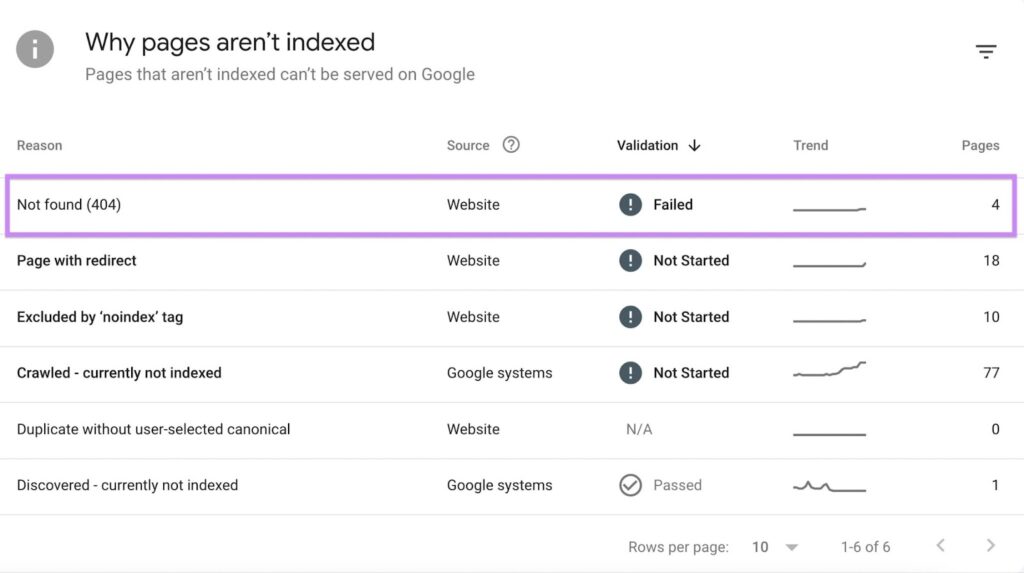 Use Google Search Console to find crawl errors and broken links
Use Google Search Console to find crawl errors and broken links
14. Ensure Your HTTPS and Security Settings Are Correct
Implementing HTTPS is a ranking factor and is crucial for building user trust. This includes verifying that HTTPS is correctly implemented across your entire site. Also, check for security vulnerabilities like expired SSL certificates, misconfigurations, or security issues that can impact SEO and user experience.
15. Generate a Prioritized Fix List
Make a comprehensive list of the SEO issues you found. Prioritize them based on how they impact your website. Doing so will clarify why seo audit is important for continuous improvement. Then, map out the steps needed to address the most serious issues first. This detailed, prioritized list is your roadmap to improving your SEO performance.

Create a prioritized list of issues to resolve tasks quickly and accurately
After completing an SEO audit, it’s important to assess whether your SEO provider is delivering results. Here’s how to tell if your SEO company is working effectively
Conclusion
SEO audits help find website issues, boost performance, and stay competitive online. Regular checks make sure your site works well for both users and search engines. Whether you’re a beginner or experienced, understanding why SEO audit is important and the SEO audit benefits is key to long-term success. Use the steps above to maintain and grow the website’s SEO potential.
Ready to unlock the website’s full potential and gain a competitive edge? Don’t let SEO complexities hold you back. At GO DIGITAL, we offer expert outsourcing SEO services to handle the heavy lifting. Let our experienced team conduct a thorough SEO audit, install effective strategies, and drive sustainable growth for your business.



